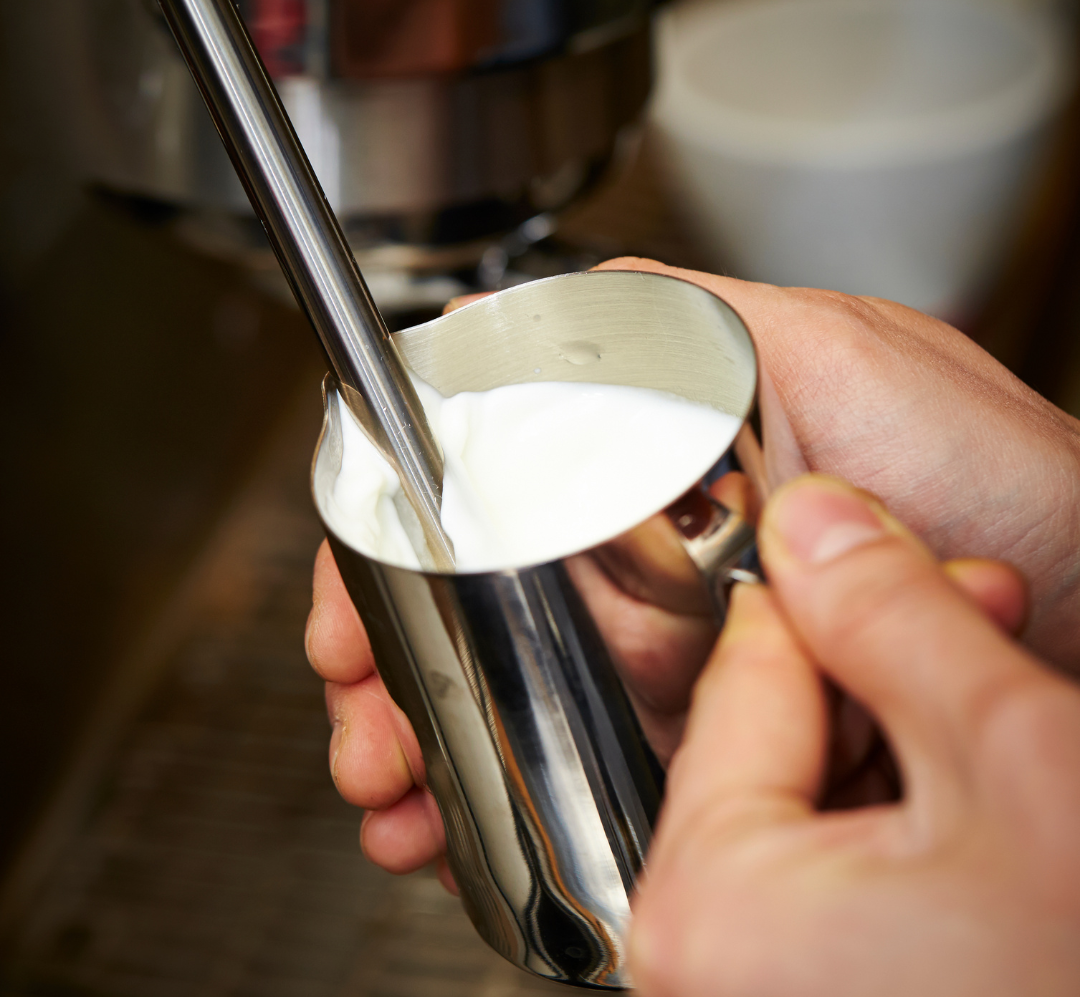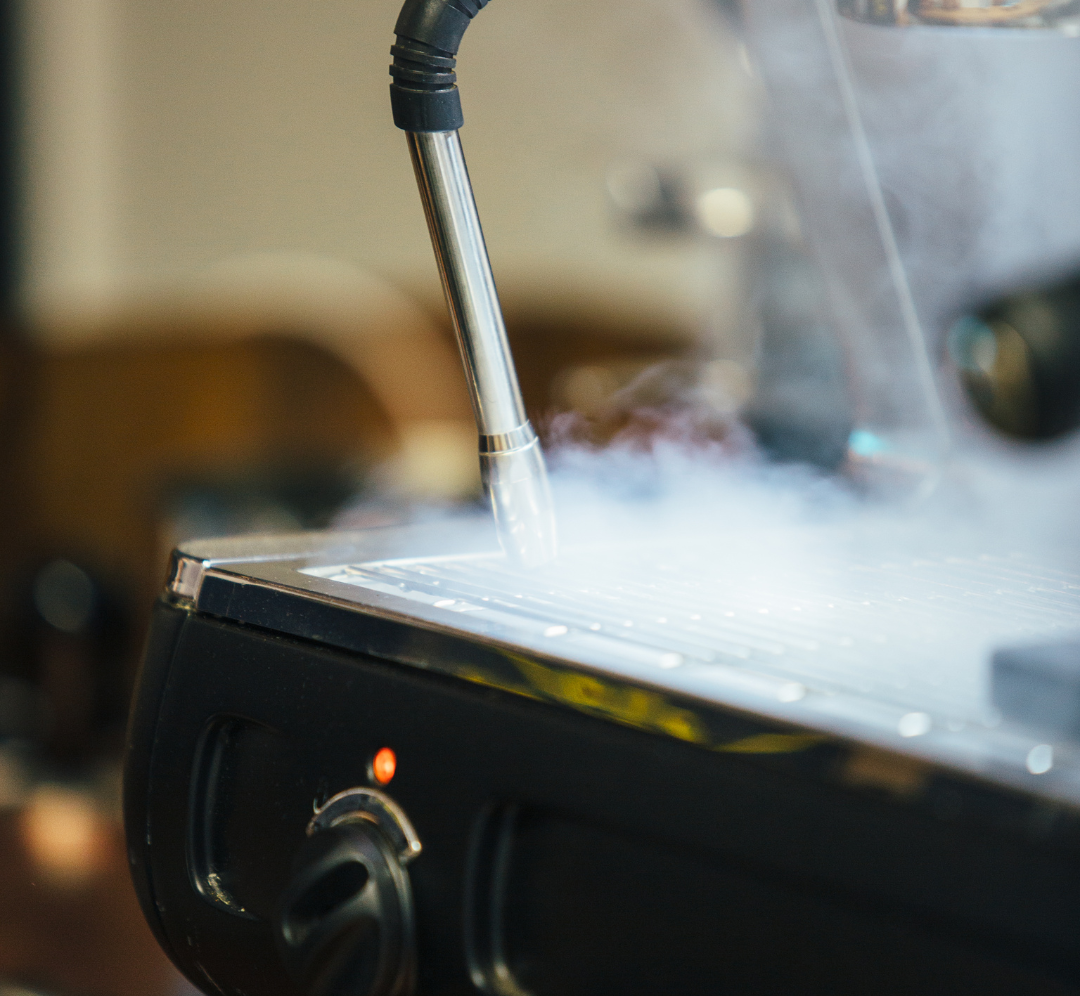Getting the Most from a Milk Steamer
Commercial milk steamers play an essential role in giving coffee that barista-quality velvety texture, and for many people they're part of the theatre of going out for a professionally made cup of coffee.
With the advent of domestic milk steamers, and some people opting to install commercial milk dispensers in their own home for the full coffee shop experience, it’s increasingly possible to get the same quality into a home-made cup.
Along with the espresso dispenser, milk steamers are a significant part of what makes a good cup of coffee (unless you prefer your coffee black, of course). Let’s take a more detailed look at how this important part of a professional coffee machine works.
What is a milk steamer?
Commercial milk dispensers come in several different types, but their role is always broadly the same:
- To heat and texturise the milk by exposing it to pressurised steam
- To heat the lactic sugar and break down the fats in the milk
- To create uniform ‘microfoam’ bubbles for a silky texture
The microbubbles created by commercial milk steamers are what gives professional barista coffee its velvety mouthfeel, along with a distinctive reflective sheen on its surface once it is poured.

Different types of steam wands
Several different types of steam wands are in common usage, including some that make it easier to produce barista-style steamed milk in your own home, for a better cup of coffee.
Panarello/Pannarello wands
You’ll often see Panarello wands on entry-level automatic coffee machines and lower-end espresso machines. That’s a good thing, as they’re easier to use, making those machines more accessible to beginners and even to install in domestic properties.
Panarello wands (or Pannarello wands – both spellings are widely used) consist of a thick sheath made of metal or plastic, with tiny air holes along the top of the rim and a large hole at the bottom of the nozzle.
They work by injecting air into the milk, making them ideal for coffee machines with smaller boilers. The result is a thick, heavy froth that works well on cappuccinos.
Pinhole wands
Pinhole wands take longer to learn, but give professional baristas much better control over the process, allowing the milk to be frothed to a consistency as thin or thick as desired.
The fully metal wand is completely enclosed, with tiny holes at the bottom tip of the nozzle. The wand shoots out jets of high-pressure steam, spinning the milk rapidly and forcing air into it.
By controlling how much air is incorporated into the milk, the barista can decide the final texture, which can also affect the taste of the coffee and enable the foam to be used for latte art.
Autosteam wands
Autosteam wands, which you will find on many Mulmar Faema espresso machines, allow you to heat and texture milk in large quantities, without taking the time or personnel to do it manually.
There are still good options for customisation, including the temperature of the milk and its final texture – unfrothed, slightly creamy, lots of cream and so on.
Because the autosteam wand stops automatically when the desired result is reached, it’s a perfect option for busy baristas, as you can start the milk foaming while you prepare the other parts of the order.
Keeping your steaming wand clean
Commercial milk steamers need regular cleaning, but it’s important to follow the correct process, both for your own safety and for the longevity of your equipment.
Most importantly of all, never ever touch the metal parts of the steam wand during or immediately after steaming, as it will get very hot.
Some professional coffee machines come with ‘cold touch’ steam wands that remove this risk. Examples of this include the Faema E71 and Faema President, both available from Mulmar.
Best practice for steam wand cleaning
‘Little and often’ is a good principle to apply when cleaning commercial milk dispensers:
- After each use, wipe the wand with a dedicated cloth
- Purge any milk remnants by turning it on for 1 second
- Replace the cloth regularly and don’t use it for anything else
Purging the wand helps to prevent dried milk from building up inside. Remember, you should never try to clean a steam wand by soaking it in water, as this can lead to milk being sucked back into the boiler, a much more difficult and costly cleaning task.
How to remove dried milk residue
If you do find milk residue has accumulated inside the wand, try the following:
- Wrap the wand tightly with a damp cloth
- Turn on the steamer for 30 seconds
- Wipe away any ejected residue
Make sure you follow the guidance for deep cleaning your coffee machine, including the steam wand, at least every 1-2 months (and more often if your business sells a lot of coffee).
Finally, if you use any cleaning products, remember to properly purge the wand afterwards, so that none of the detergent finds its way into the next cup of coffee you serve.

How to steam the milk – troubleshooting
Here are some of the most common problems with milk steamers and some top tips for how to solve them.
Milk screeches whilst steaming
This can be a combination of factors with different solutions:
- Not enough air – lower the pitcher and inject more air
- Too high temperature – stay below 65C and shut off the wand immediately
Try either or both solutions until you find the right combination to silence your milk steaming process.
Milk overflows and spills out of the pitcher
May be caused by too much milk. Only fill the pitcher to between a third and a half full at most.
Inject less air and raise the pitcher slightly sooner, so that frothing is completed before the milk can overflow.
Milk appears too watery
This may just be a case of not enough air – lower the pitcher for longer to allow more air to be injected into it.
Full-fat milks can be easier to foam, so try fresh whole milk when learning how to use a milk steamer, until you pick up the basic technique.
The milk texture is bubbly and clumped up
A clumpy, bubbly texture can actually have many causes, so watch out for any of the following:
- Excessive frothing – try raising the pitcher sooner
- Type of milk – soy milk clumps more easily so needs extra care
- Milk not spinning – you need a whirlpool to incorporate the air
Pay extra attention to the whirlpool spinning at the centre of your milk. Without a proper spin, the air will not mix, and will sit on top of the espresso instead.
More from Mulmar
If you would like to know more about commercial milk dispensers, entry-level barista steaming wands and professional espresso machines suitable for domestic installation, contact Mulmar today and we will be happy to discuss the best solutions for you.